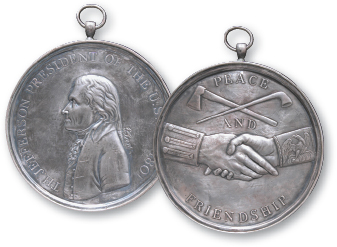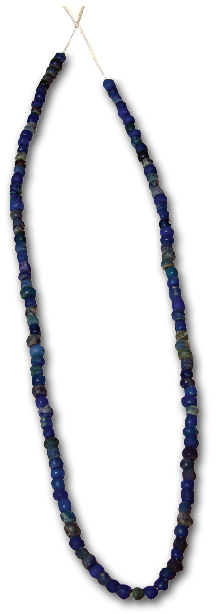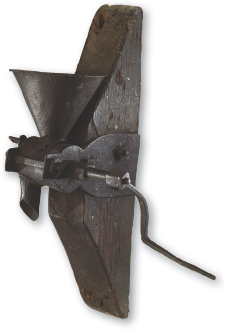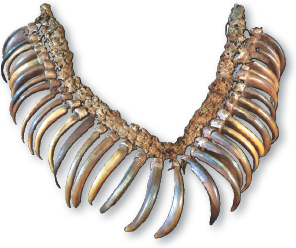Visualizing History: Cultural Exchange on the Lewis and Clark Trail
Cultural Exchange on the Lewis and Clark Trail

Lewis and Clark carried many gifts for the Indians they anticipated meeting as they traveled up the Missouri River toward the Rocky Mountains. Intended to signal goodwill and respect, some of the gifts held other subtle meanings as well.
Upon encountering new tribes, the explorers presented high-ranking Indian leaders with silver medals bearing the likeness of President Jefferson, in two-, three-, or four-inch sizes. Imagine the Indian recipients' reactions. What specific message might the image of the president convey? On what basis do you think the explorers chose to distribute the various sizes?

The explorers traveled with ornamental trinkets ("ear bobs," silk handkerchiefs, ivory combs, ribbons) as well as practical goods (brass buttons, needles and thread, blankets, calico shirts) that demonstrated American manufacturing and handcraft. They carried a few small mirrors and magnifying glasses but on one occasion found that making fire with the latter engendered suspicion, not goodwill. Blue glass beads — portable and inexpensive — were a sought-after gift, leading Clark to observe that beads "may be justly compared to gold and Silver among civilized nations."
Jefferson pointedly urged Lewis to take small hand-cranked corn mills, to acculturate the native women to American household technology. Indian women, with full charge of corn agriculture and its preparation as food, used mortars and pestles to pulverize dried kernels. Each time Lewis and Clark presented tribal chiefs with a corn mill and demonstrated its use, the recipients professed to be "highly pleased." Yet a year later, a fur trader visiting the Mandan nation wrote, "I saw the remains of an excellent large corn mill, which the foolish fellows had demolished to barb their arrows." Did the explorers perhaps fail in their mission by giving the mill to male leaders instead of to women? Or could this repurposing of the food grinder be read as a rejection by the women themselves of Americans' gendered practices?

The explorers received gifts as well. The most impressive was the necklace shown here, made of thirty-five four-inch grizzly bear claws. The explorers encountered a number of Indian men wearing bear claw "collars" (Lewis's term for it). For many tribes, bears were sacred animals, and their claws embodied spiritual power. Grizzlies are large (up to nine hundred pounds) and aggressive, so acquiring so many claws without firearms clearly took extraordinary courage. Can you imagine the impact of wearing such an ornament when meeting visitors from a distant and unknown society? Was it a forceful show of courage and power? Why might Indians bestow this rare necklace on the explorers? Did it honor their manly courage? Or promote a spiritual brotherhood? Or might it have been intended to discourage further shootings of the sacred bears?

SOURCE: Jefferson's medal: Research Division of the Oklahoma Historical Society; Trade beads: Lewis & Clark Mandan Foundation; Corn mill: The Colonial Williamsburg Foundation; Bear claw necklace: © President and Fellows of Harvard College, Peabody Museum of Archaeology and Ethnology number 41-54-10/99700 (digital file # 60740049).
CONNECT TO THE BIG IDEA

Why was the territory of the Louisiana Purchase important to President Jefferson, and why did he send Lewis and Clark to explore it?